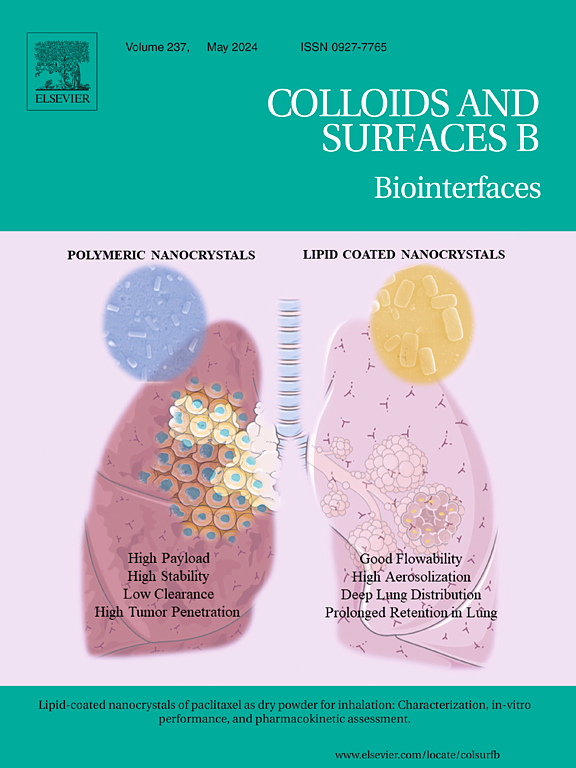gryphiswaldense MSR-1中磁小体的小角散射特性
IF 5.4
2区 医学
Q1 BIOPHYSICS
引用次数: 0
摘要
磁小体是由趋磁细菌合成的生物源纳米材料,在药物传递和环境修复等方面具有广阔的应用前景。本研究提供了在不同条件下培养的从gryphiswaldenmagnetospirillum MSR-1分离的磁小体的全面特性。利用动态光散射、原子力显微镜、扫描电子显微镜、红外光谱和x射线衍射等实验室技术分析样品的化学和物理性质,并验证其晶体结构。利用小角中子和x射线散射进行了进一步的结构研究,并通过一种新的模型分析了数据,该模型允许对磁小体进行定量分析,详细描述了它们的氧化铁核、脂质膜和相关蛋白质。这项研究促进了我们对磁小体结构和功能的理解,展示了定制细菌生长条件的潜力,以解决每种特定应用的最佳特性,从而为未来广泛的应用奠定了基础。本文章由计算机程序翻译,如有差异,请以英文原文为准。

Small-angle scattering characterization of magnetosomes from Magnetospirillum gryphiswaldense MSR-1
Magnetosomes are biogenic nanomaterials synthesized by magnetotactic bacteria, with promising applications in drug delivery and environmental remediation. This study offers a thorough characterization of magnetosomes isolated from Magnetospirillum gryphiswaldense strain MSR-1, cultivated under various conditions. Laboratory techniques, including dynamic light scattering, atomic force microscopy, scanning electron microscopy, infrared spectroscopy, and X-ray diffraction were employed to analyze the chemical and physical properties of the samples and to verify their crystal structure. Further structural investigations were carried out by using small-angle neutron and X-ray scattering and data were analyzed through a novel model that allowed for a quantitative analysis of magnetosomes, detailing their iron oxide core, lipid membrane, and associated proteins. This research advances our understanding of magnetosome structure and functionality, demonstrating the potential to tailor bacterial growth conditions in order to address optimal characteristics for each specific application and, thus, laying the groundwork for a broad spectrum of future applications.
求助全文
通过发布文献求助,成功后即可免费获取论文全文。
去求助
来源期刊

Colloids and Surfaces B: Biointerfaces
生物-材料科学:生物材料
CiteScore
11.10
自引率
3.40%
发文量
730
审稿时长
42 days
期刊介绍:
Colloids and Surfaces B: Biointerfaces is an international journal devoted to fundamental and applied research on colloid and interfacial phenomena in relation to systems of biological origin, having particular relevance to the medical, pharmaceutical, biotechnological, food and cosmetic fields.
Submissions that: (1) deal solely with biological phenomena and do not describe the physico-chemical or colloid-chemical background and/or mechanism of the phenomena, and (2) deal solely with colloid/interfacial phenomena and do not have appropriate biological content or relevance, are outside the scope of the journal and will not be considered for publication.
The journal publishes regular research papers, reviews, short communications and invited perspective articles, called BioInterface Perspectives. The BioInterface Perspective provide researchers the opportunity to review their own work, as well as provide insight into the work of others that inspired and influenced the author. Regular articles should have a maximum total length of 6,000 words. In addition, a (combined) maximum of 8 normal-sized figures and/or tables is allowed (so for instance 3 tables and 5 figures). For multiple-panel figures each set of two panels equates to one figure. Short communications should not exceed half of the above. It is required to give on the article cover page a short statistical summary of the article listing the total number of words and tables/figures.
 求助内容:
求助内容: 应助结果提醒方式:
应助结果提醒方式:


